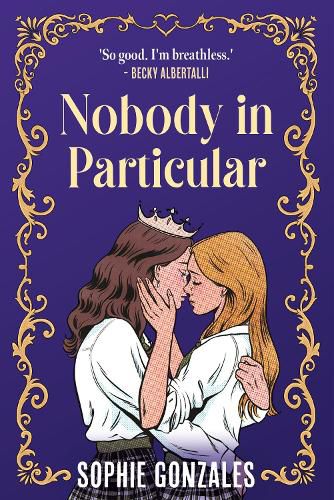Nobody in particular by Sophie Gonzales

This is one for LGBTQIA+ fantasy romance readers: a same-sex romance between a princess and a commoner. Danni, a budding concert pianist, wins a scholarship to the prestigious school that Princess Rose attends. However Rose’s image is in freefall following the overdose death of a friend at a teenage party. She seems to have coolly moved on, focussing on rehabilitating her status in the media. Despite the anger of Rose’s estranged friend Molly, Danni suspects there is more to the story, and is drawn to the beautiful princess.
The strength of Gonzales’ novel is in the depiction of teenage relationships, the ups and downs of friendship groups, the misunderstandings and antagonisms. The resolutions she describes are a model of how to better communicate and reach understanding. Rose’s humour is the typical use of teenage sarcastic wit. Fortunately, having had experience of bullying, Danni knows how to handle this, and responds in an equally lighthearted manner. At the same time, Danni has a perceptive understanding of how different people respond to trauma, and sees past Rose’s cool detachment.
The other strong point in this novel, is the handling of how and when to ‘come out’ as a gay person, and the right of every person to make their own decision about that. While one person may be open about their sexual identity, they have to respect the right of the other to choose their own time and space for this step, something that is bound to cause tension in a relationship.
In the relationship between Danni and Rose, Gonzales portrays an anxious but very respectful and careful negotiation of each step in their physical interaction; they always check in with each other. There are two other consent situations depicted. When Rose’s friend Alfie unexpectedly kisses her, this is treated as something that Rose has to work out how to handle. But when Harriet kisses Danni, misreading her cues, it is treated like this is something unforgiveable even though Harriet apologises repeatedly. I see this uneven handling of the consent situation as a failing of the novel, though it could be a useful point of thoughtful discussion with teenage readers.
Of course, you can simply read this novel as a stirring love story for the LGBTQIA+ audience: a lovely royalty and commoner fantasy, perhaps made more real in the era of Harry and Megan, and it certainly picks up on the role of social media in how such a relationship is viewed. There is a lot that is good about this book, and I’m sure that Gonzales’ fans will eagerly embrace this one.
Themes: LGBTQIA+, Romance, Identity, Trauma.
Helen Eddy